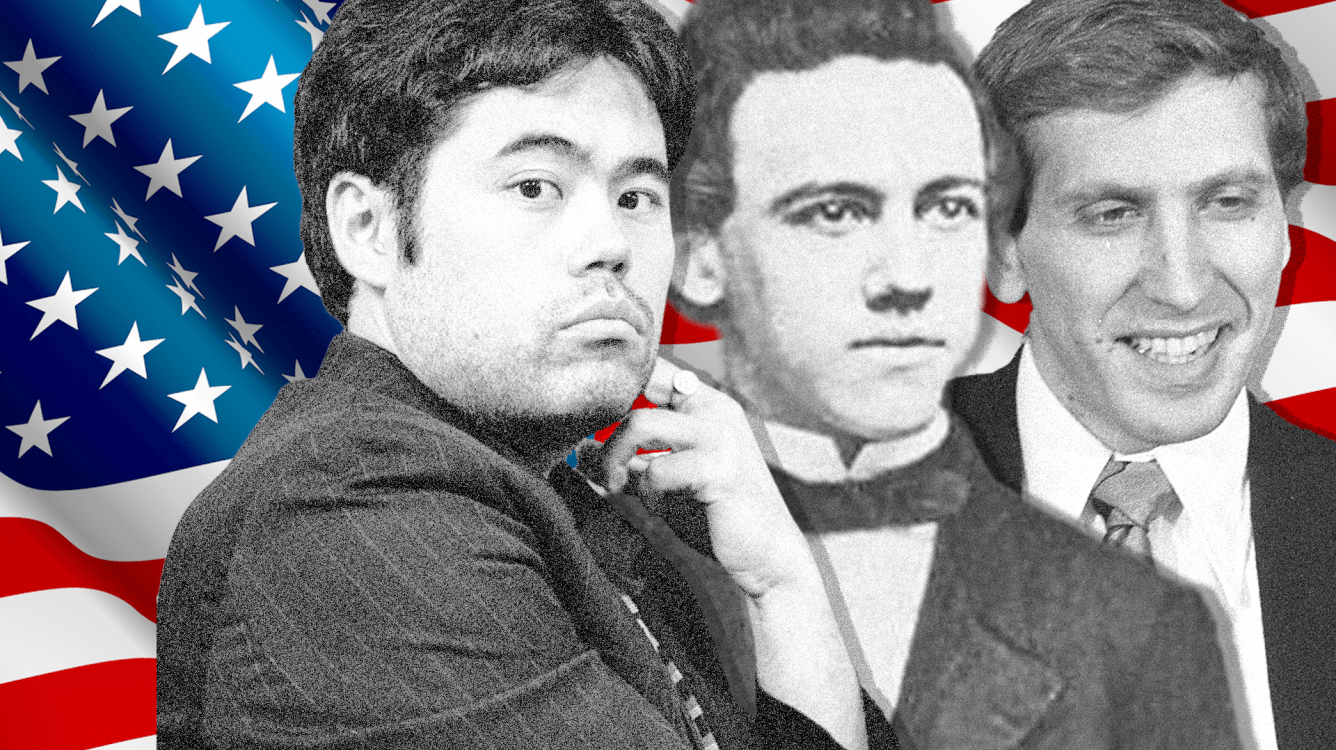
What America Taught The World About Chess
Generations of American players have contributed significantly to the game of chess. As they have inspired schools of thought, developed creative approaches for all phases of the game, and achieved brilliant wins while enduring difficult losses, they have influenced players around the world.
Looking at the body of work that U.S. players have created, it’s important to recognize how their gifts to the game of chess have enriched us all:
- Romantic Play
- Classical Play
- Opening Theory
- Creative Gambits
- Chess Theory
- Brilliant Tactics
- End of Soviet Domination
- Inspiring Players At Home And Abroad
- Streaming, Pogchamps, And Esports

Romantic Play
A foremost gift to the world chess scene is the play of Paul Morphy, who contributed significantly to the Romantic School, which emphasized quick, tactical moves. With his dazzling tactical and offensive play, Morphy is considered the first modern player. Named after him, the Morphy Defense of the Ruy Lopez continues to be the most popular variant of that opening. Considered by many to be an unofficial world champion, he played quickly and was hard to beat.
In the book My Great Predecessors, GM Garry Kasparov describes Morphy as the "forefather of modern chess" because “his play was the next, more mature stage in the development of chess.” The “Opera Game,” which Morphy played in 1858, is illustrative of his attacking genius.
His play was the next, more mature stage in the development of chess.
—GM Garry Kasparov, about Morphy
Classical Play
Several years after Morphy had played the Opera Game, a new generation of players began to reject the Romantic concept that attack was more worthy than defense. Although positional play was not a new notion, it did not become widely accepted until advanced by the Classical School with their ideas of defense-based chess. During this era, Harry Pillsbury and Frank Marshall rose to the top of world chess.

Pillsbury won the star-studded 1895 Hastings tournament. His superior performance at Hastings (+15 -3 =3) helped to popularize the Queen’s Gambit, which he played against Siegbert Tarrasch, a world-class player known for his defense against that opening. Pillsbury’s win is characteristic of Classical thinking.
Opening Theory
Equally noted for his Classical style, Marshall is one of several American players who advanced opening theory considerably. Several opening variations, such as the Marshall Defense to the Queen’s Gambit, are named after him as a result. Prominent among them is the Marshall Attack in the Ruy Lopez that he had played before 1918, but that year was when his well-known game with Jose Capablanca was played. Although Capablanca’s defensive genius guided him to a win, Marshall’s opening became extremely popular.
Other openings named for Americans are just as significant, including these examples:
- Weaver Adams, U.S. champion in 1948, is the namesake of the Adams Attack of the Sicilian Defense (1.e4 c5 2.Nf3 d6 3.d4 cxd4 4.Nxd4 Nf6 5.Nc3 a6 6.h3).
- The opening characterized by the move 1.g3 is known as Benko’s Opening, is named after GM Pal Benko.
- GM Bobby Fischer has given us the Fischer Defense of the King’s Gambit (1.e4 e5 2.f4 exf4 3.Nf3 d6).
- GM Andy Soltis, enshrined in the U.S. Chess Hall of Fame, and Preston Ware Jr. also have openings named after them.
Creative Gambits
Gambits, special openings in which players sacrifice material to achieve advantages later, also have been inspired by American players and have been named after them as this brief list illustrates:
- The Morphy Gambit of the French Defense (1.e4 e6 2.d4 d5 3.Nh3) is named after Morphy.
- Both the Marshall Gambit in the Semi-Slav Defense (1.d4 d5 2.c4 e6 3.Nc3 c6 4.e4 dxe4 5.Nxe4 Bb4+ 6.Bd2) and the one in the Tarrasch Defense (1.d4 d5 2.c4 e6 3.Nc3 c5 4.cxd5 exd5 5.e4) are named after Marshall.
- The Koltanowski Gambit of the Italian Game (1.e4 e5 2.Nf3 Nc6 3.Bb5 Bc5 4.c3 d5) is named after George Koltanowski.
- Much later, Benko gave us the popular Benko Gambit, characterized by the move 1.d4 Nf6 3.c4 c5 3. d5 b5 in the Benoni Defense.
- GM Alexander Shabalov, four-time U.S. chess champion, has lent his name with that of Latvian-Spanish GM Alexei Shirov to the Shabalov-Shirov Gambit of the Semi-Slav Defense (1.d4 d5 2.c4 c6 3.Nf3 Nf6 4.Nc3 e6 5.e3 Nbd7 6.Qc2 Bd6 7.g4).
Chess Theory
In addition to the players who contributed to the facets of the game just discussed, GM Reuben Fine was particularly instrumental in advancing chess theory. Inducted into the U.S. Chess Hall of Fame in 1986, the charter class, Fine was one of the 17 players first awarded the grandmaster title by FIDE in 1950.
A prolific author, his books on the opening, middlegame, and endgame of chess are unsurpassed by any others. He was the first world-class player to edit the definitive Modern Chess Openings when he edited the sixth edition. One of the strongest players in the world from the mid-1930s until he retired from competitions in 1951, Fine continued his successful career writing about chess theory for many more years.
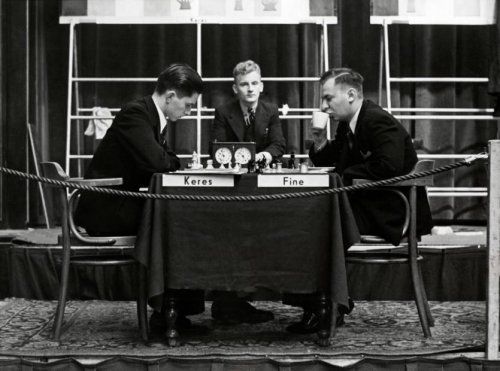
Brilliant Tactics
A brilliant chess tactician, GM Samuel Reshevsky was a remarkable player who was also superb at positional play and defeated seven world champions. He was a serious contender for the world championship from the mid-1930s to the mid-1960. (Read about Reshevsky’s prime years here.)
About a loss to Reshevsky in the 14th round of the 1948 World Chess Championship, a quintuple round-robin, eventual winner GM Mikhail Botvinnik writes in his book Achieving the Aim: “An unpleasant defeat—I had just been arguing that Reshevsky was not dangerous and now this…. ‘Reshevsky may become world champion,’ I said, ‘but this would indicate that nowadays there are not strong players in the world.’"
Reshevsky may become world champion, but this would indicate that nowadays there are not strong players in the world.
—GM Mikhail Botvinnik
Several years later, in the 1955 U.S.S.R. vs. U.S. team match, Reshevsky again faced Botvinnik, still the reigning world champion, four times. They drew three games—and Reshevsky won the fourth (game below) for a positive score, which must have given him sweet satisfaction.
End of Soviet Domination
Beth Harmon in the miniseries The Queen’s Gambit remarked: “Chess isn’t always competitive. Chess can also be beautiful.” However, during the Cold War, beauty was not always on display at a tournament. During the global competition between the West and the Eastern Bloc, the rivalry—not limited to weaponry and military alliances—extended to chess as well. As Benko once remarked: “In the Soviets' view, chess was not merely an art or a science or even a sport; it was what it had been invented to simulate: war.”
In the Soviets' view, chess was not merely an art or a science or even a sport; it was what it had been invented to simulate: war.
—GM Pal Benko
No one was as indispensable as Fischer, who also made numerous contributions to opening theory, for ending the Soviet grasp on world chess championships. When Botvinnik won the 1948 championship, his reign began the era of Soviet domination of world chess that lasted more than 20 years without interruption. For that championship, the U.S. delegation consisted of one person—Reshevsky (at the last moment, IM Lodewijk Prins, later a Dutch champion and an honorary GM, was permitted as Reshevsky’s second). In contrast, the Soviets had a contingent of about 21 that included players, their seconds, family members, chess officials, and a physician.
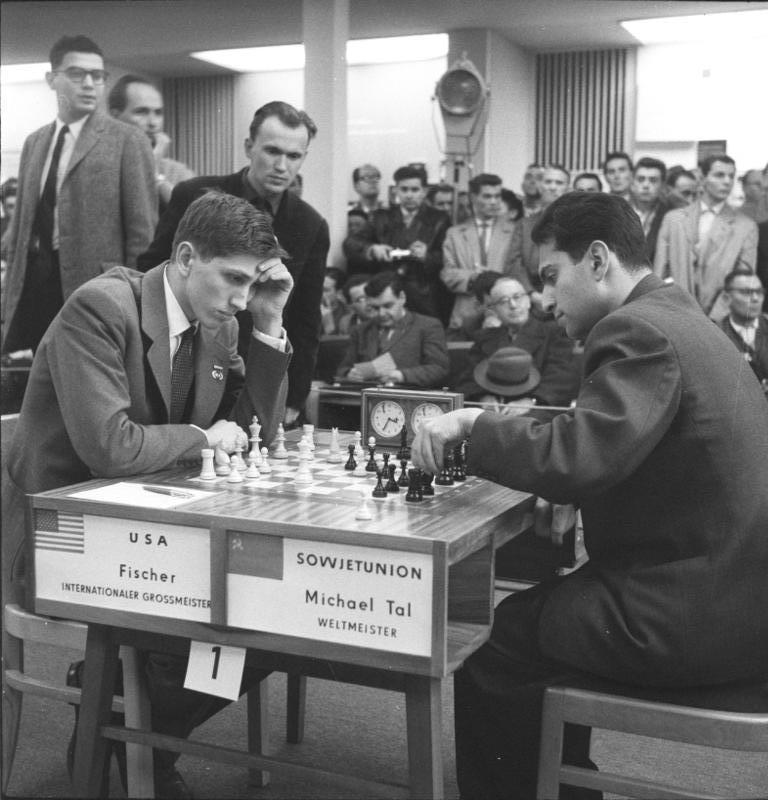
The rise of Fischer to become the 11th world chess champion was more than inspirational. The Game of The Century, which he played when just 13, is unsurpassed in instructional value for how it shows the power of harmonious pieces in materially imbalanced positions. As the youngest GM (at that time) and the youngest candidate for the world championship, the world knew that he would achieve great results.
In the 1972 championship match publicized as a Cold War confrontation between the U.S. and the Soviet Union, Fischer succeeded in defeating GM Boris Spassky. Fischer’s victory did more than end Soviet domination; it launched a “chess craze” unrivaled until the chess boom spawned by The Queen's Gambit. In addition to his remarkable games, his other eternal gifts include his books and other contributions to chess literature, the process to add time increments after each move (that he patented in 1989), and inventing the variant of Fischer Random Chess (also known as Chess960).
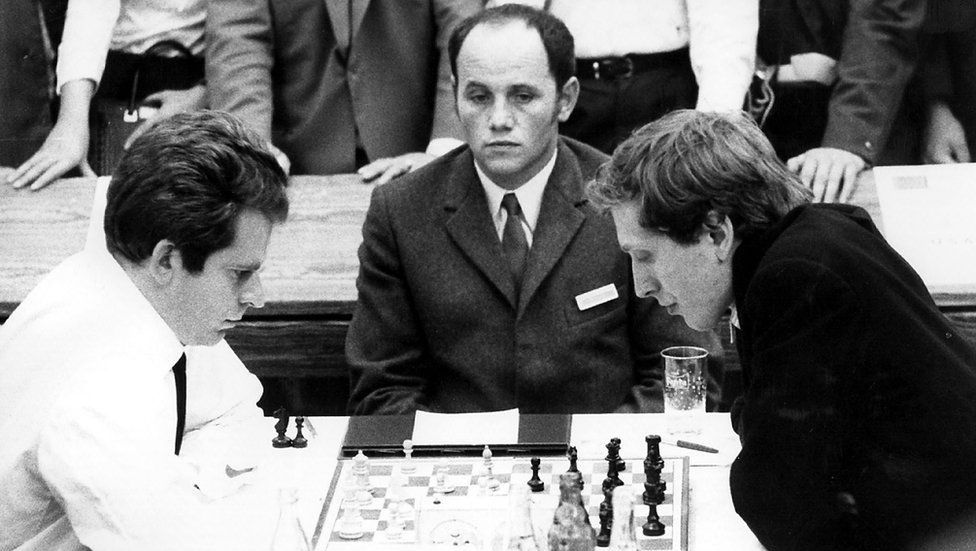
Inspiring Players At Home And Abroad
Following in the footsteps of their predecessors, a new generation of Americans is now inspiring chess players at home and abroad. The 2016 and 2018 U.S. Olympiad teams finished first and tied for first respectively. Of the top-10 players in the world, two are Americans. (GM Fabiano Caruana, playing in the soon-to-be-resumed 2020-21 FIDE Candidates, is number two, and GM Wesley So is number eight.) Two others (GMs Leinier Dominguez Perez and Hikaru Nakamura) are in the top 20. Their play has increased the interest in time controls of bullet, blitz, and rapid as well as in variants such as Chess960.
Streaming, Pogchamps, And Esports
American players are also propelling the worldwide boom in chess with their entertaining streaming channels, participation in events such as Pogchamps, and affiliations with esports organizations. Leading the way is Nakamura who has more than 1 million followers on Twitch and over 900,000 on YouTube (as of April 2021). In addition to promoting chess, his streaming channel has raised more than $1 million for the humanitarian agency CARE.
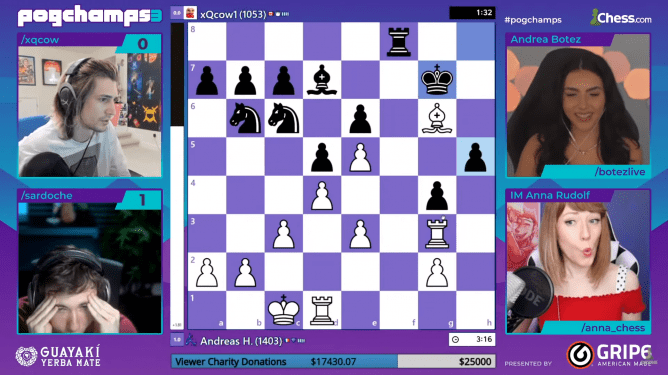
Nakamura has also coached players competing in Pogchamps and provided commentary during the games. About this series of Chess.com tournaments featuring streaming personalities, he said: “Pogchamps is doing a tremendous job of promoting chess” (Pogchamps 3 drew over 375,000 concurrent viewers at its peak). Nakamura, GM Andrew Tang, and the Botez sisters (WFM Alexandra and Andrea)—signed by TSM, Cloud9, and Envy Gaming respectively, all elite esports organizations—are also early leaders in showing how to broaden the appeal of chess through these activities.
Pogchamps is doing a tremendous job of promoting chess.
—GM Hikaru Nakamura
The continuous contributions by successive generations of preeminent American chess players have significantly shaped how we understand and play the game today, and their gifts have enriched the world chess community. They leave a remarkable legacy that will continue to inspire us.


